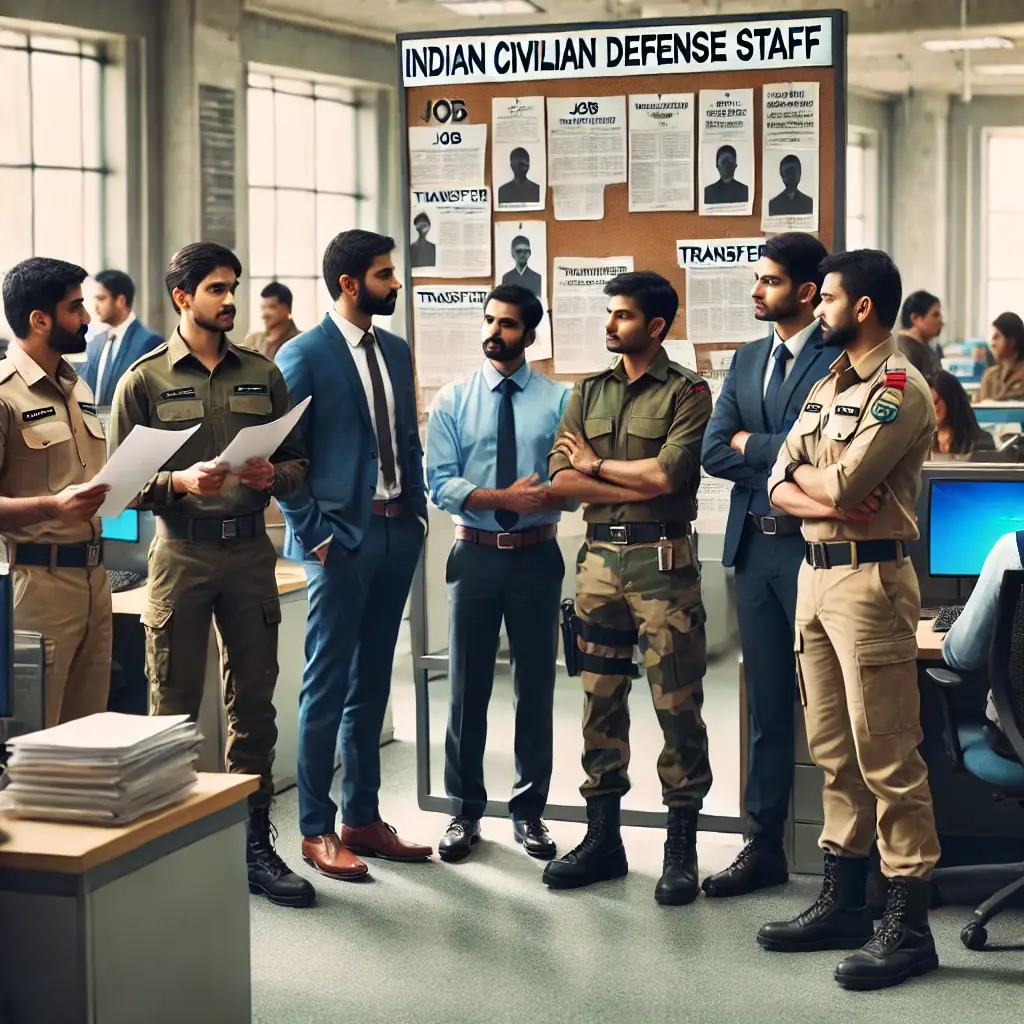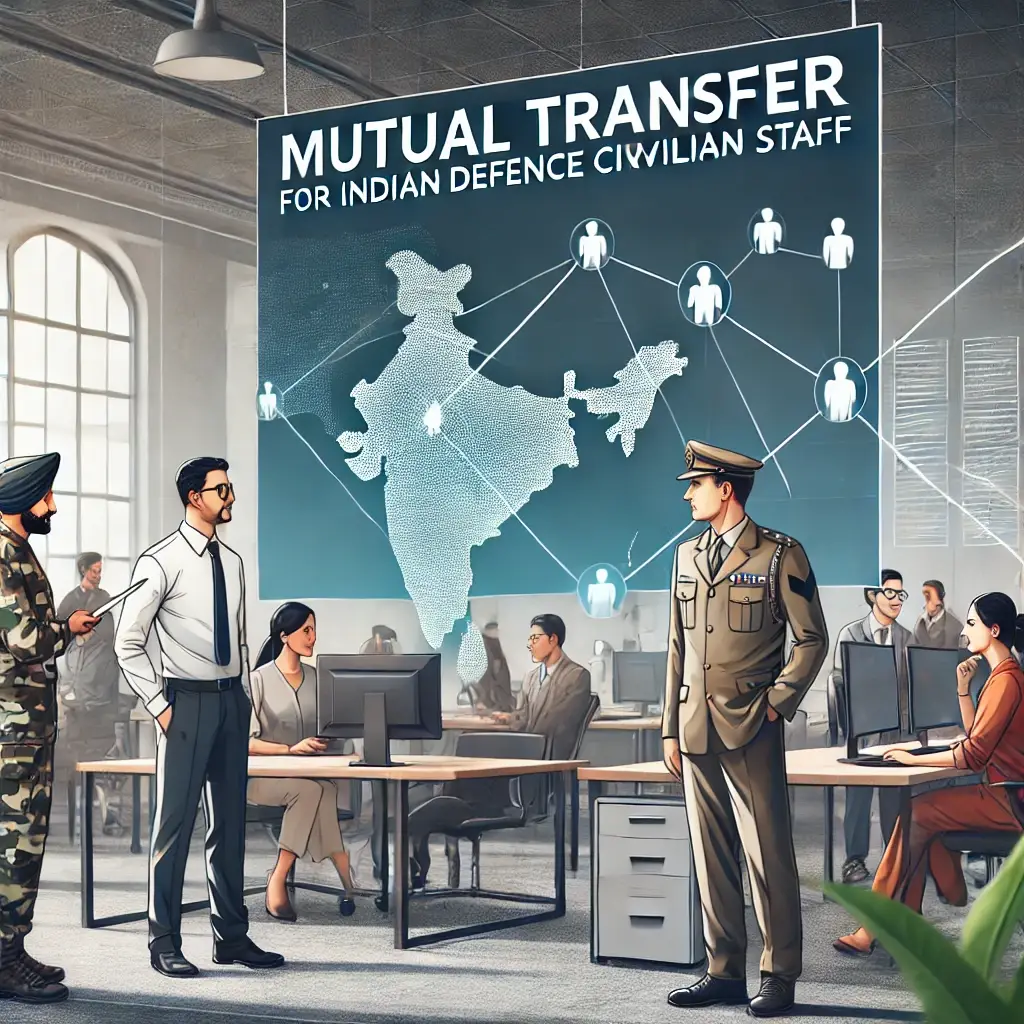What is a Mutual Transfer?

In the ever-evolving landscape of government service, transfers are an inevitable aspect of professional life. Whether driven by administrative needs, personal circumstances, or career aspirations, transfers can significantly impact an employee’s life. For many defence civilian employees, mutual transfers offer a balanced solution, allowing individuals to swap positions with others in similar roles, subject to administrative approval. This blog provides a detailed understanding of mutual transfers, their rules, benefits, and how they can be a game-changer for civilian personnel.
What is a Mutual Transfer?
A mutual transfer occurs when two employees in the same capacity or grade agree to swap their postings. This arrangement is typically sought for personal or professional reasons, such as:
- Being closer to family
- Addressing health concerns
- Pursuing better career opportunities
Mutual transfers are governed by specific policies to ensure fairness, transparency, and alignment with organizational requirements.
Key Guidelines for Mutual Transfers
Based on the Policy Guidelines on Transfer of Civilian Personnel, here are the essential rules and procedures for mutual transfers:
1. Eligibility Criteria
- Both employees must be in the same capacity or grade.
- They must have completed at least half of their prescribed tenure at their current station.
2. Administrative Approval
- Mutual transfers are subject to service exigencies and administrative feasibility.
- The request must be approved by the respective Appointing Authority or Cadre Controller.
3. Procedure for Requesting Mutual Transfers
- Employees must submit their applications through official channels.
- Applications submitted by relatives or dependents will not be considered.
- The request should include valid reasons for the transfer and be supported by recommendations from the Controlling Officer.
4. Exceptions
- Mutual transfers may not be entertained in sensitive assignments or where operational requirements take precedence.
- Employees serving in remote or hard stations may face additional restrictions.
Benefits of Mutual Transfers
1. Work-Life Balance
Mutual transfers allow employees to relocate closer to their families, reducing stress and improving overall well-being.
2. Career Growth
Swapping postings can provide access to better career opportunities, training, or exposure to new work environments.
3. Reduced Administrative Burden
By facilitating mutual transfers, organizations can address employee grievances while minimizing disruptions to operations.
4. Employee Satisfaction
Offering flexibility in transfers boosts morale and fosters a positive work culture.
Challenges and Considerations
While mutual transfers offer numerous benefits, there are certain challenges to keep in mind:
1. Administrative Constraints
Transfers must align with organizational needs and cannot compromise operational efficiency.
2. Tenure Requirements
Employees must complete a minimum tenure before being eligible for a mutual transfer.
3. Limited Vacancies
Availability of suitable positions for swapping may be limited, especially in remote or hard stations.
4. Sensitive Assignments
Employees in sensitive roles (e.g., financial dealings, recruitment) may face restrictions on transfers.
How to Apply for a Mutual Transfer
If you are considering a mutual transfer, follow these steps:
1. Check Eligibility
Ensure you meet the tenure and grade requirements.
2. Identify a Suitable Candidate
Find another employee in the same capacity who is willing to swap postings.
3. Submit an Application
Submit a formal request through your unit, providing valid reasons and supporting documents.
4. Await Approval
The request will be scrutinized by the Appointing Authority, and a decision will be communicated.
Tips for a Successful Mutual Transfer
- Plan Ahead
Start the process well in advance to allow sufficient time for approvals. - Communicate Clearly
Clearly state your reasons for the transfer and ensure all documentation is complete. - Be Flexible
Understand that administrative exigencies may affect the outcome. - Stay Informed
Regularly check for updates on transfer policies and guidelines.
Conclusion
Mutual transfers are a valuable tool for defence civilian employees seeking to balance personal and professional needs. By understanding the guidelines and following the proper procedures, employees can navigate the transfer process effectively. For organizations, facilitating mutual transfers can lead to higher employee satisfaction and retention, ultimately contributing to a more productive and harmonious work environment.
For more information, refer to the official resources:







